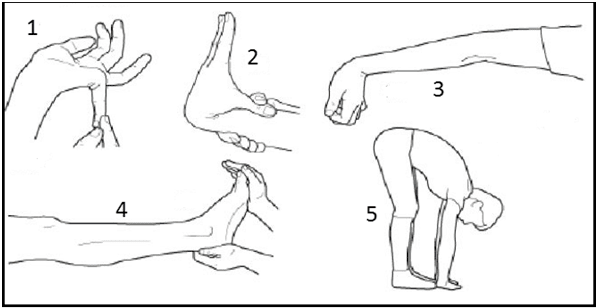
Are you super flexible, or have you been called “double jointed”?
Joint Hypermobility is a condition where the soft tissue in the joints has too much elasticity and therefore allows the joint to extend beyond a normal range movement.
The condition is typically inherited, and is fairly common. Being flexible has some obvious benefits, including a natural talent for gymnastics or ballet, but having hypermobile joints has some drawbacks as well when it comes to musculoskeletal injuries.
Here’s an easy test to see if you might have hypermobile joints:
Can you:
- Touch your thumb to your wrist?
- Straighten your arm beyond 180 degrees?
- Touch the floor without bending your knees?
The graphic below shows a few other tests, called the “Beighton Score”, this is not conclusive but can give an indication if you may have this condition.

So what does it mean if you have Joint Hypermobility?
When connective tissue has too much elasticity, you’re at risk of injury because your joints can easily hyper-extend, i.e. extend beyond their normal range of movement.
This can lead to repetitive sprains, and even joint dislocations.
If you have joint hypermobility, you need to focus on gaining more control of the movement around your joints.
This control is gained through strengthening the surrounding muscles through controlled, functional movement. Exercises that focus on stability will help greatly, think: squats, lunges, balancing exercises, and planks.
When to see us:
If you feel you might have hypermobile joints, it’s important to be proactive in keeping the muscles surrounding your joints nice and strong. If you experience recurring sprains in the same location (e.g. ankles), or you have any niggles that just won’t go away, chances are there is a weakness that needs to be addressed.
A holistic physiotherapy programme could help to repair any damage and stabilise the area to prevent future injury.
Come and see one of our experienced physiotherapists for a more thorough diagnosis and to make a plan.
